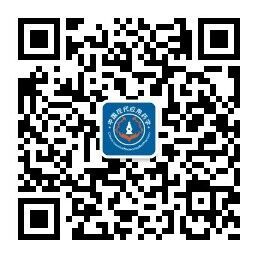| 引用本文: | 武佳璇,马英华,胡世远,赵宜乐,刘康,东蕾.基于同位素稀释-UPLC-Q-Exactive-MS法的拉考沙胺在癫痫儿童中的治疗药物监测[J].中国现代应用药学,2024,41(24):. |
| wujiaxuan,mayinghua,hushiyuan,zhaoyile,liukang,donglei.Therapeutic drug monitoring of lacosamide in epileptic children based on isotope dilution-UPLC-Q-Exactive-MS method[J].Chin J Mod Appl Pharm(中国现代应用药学),2024,41(24):. |
|
| 摘要: |
| 摘要:目的 建立基于超高效液相色谱-四极杆/静电场轨道阱高分辨质谱技术(UPLC-Q-Exactive-MS)同时测定癫痫患儿血浆中拉考沙胺(lacosamide,LCM)和代谢物去甲拉考沙胺(O-desmethyl lacosamide,ODL)浓度的方法,分析LCM和ODL血药浓度和用药剂量、肌酐清除率(eGFR)之间的相关性,并对用药患者进行随访和治疗药物监测。方法 血浆样品经有机溶剂沉淀蛋白后以LCM-D3为内标,0.2%甲酸-水(A)和乙腈(B)为流动相、流速为0.3 mL·min-1进行梯度洗脱,柱温35℃,进样量为2 μL。质谱检测采用电喷雾离子源正离子模式。考察方法的专属性、定量下限(LLOQ)、标准曲线、残留效应、准确度精密度、提取效率、基质效应和稳定性。使用建立的方法测定临床血浆样本,并收集临床用药剂量、eGFR等相关数据,使用SPSS26.0软件分析数据间的相关性。对患儿进行随访,记录LCM疗效和相关不良反应,结合LCM血药浓度,优化LCM用药方案。结果 LCM和ODL的血药浓度在0.1~40 μg·mL-1内线性关系良好(r>0.99),LLOQ均为0.1μg·mL-1,专属性强,提取效率、稳定性良好,批内和批间精密度≤8.65%,不受正常血浆和溶血血浆(溶血程度≤5%)基质的影响,方法学验证均符合《中国药典》2020年版规定。LCM口服剂量与LCM、ODL血药浓度分别呈正相关(r=0.40,P<0.0001;r=0.37,P<0.0001),LCM的血药浓度与ODL的血药浓度呈弱正相关(r=0.30,P<0.0001)。LCM与ODL的血药浓度比与患儿eGFR呈负相关(r=-0.39,P<0.0001)。应用本方法对142名用药癫痫患儿进行血药浓度测定,并完成了125名患儿的随访,记录用药疗效,对患儿的LCM用药情况、疗效、不良反应与LCM血药浓度结合分析,LCM治疗癫痫的有效率为97.6%,不良反应发生率为29.6%。结论 本研究建立了同位素稀释-UPLC-Q-Exactive-MS法测定 LCM 和 ODL 浓度的方法。该方法快速、简便、稳定、经济,可应用于临床LCM用药儿童治疗药物监测和药代动力学研究。LCM治疗儿童患者的局灶性癫痫发作疗效良好,且不良反应较少,适用于儿童癫痫的治疗。 |
| 关键词: 拉考沙胺 去甲拉考沙胺 超高效液相色谱-四极杆/静电场轨道阱高分辨质谱 儿童 治疗药物监测 |
| DOI: |
| 分类号: |
| 基金项目:2022年度河北省省级科技计划项目资助(202230714010408) |
|
| Therapeutic drug monitoring of lacosamide in epileptic children based on isotope dilution-UPLC-Q-Exactive-MS method |
|
wujiaxuan1, mayinghua2, hushiyuan1, zhaoyile2, liukang2, donglei2
|
|
1.Hebei Medical University;2.Children’s Hospital of Hebei Province
|
| Abstract: |
| ABSTRACT:OBJECTIVE To establish a method to simultaneously determine the plasma concentration of lacosamide(LCM) and O-desmethyl lacosamide(ODL) of children with epilepsy,which based on ultra-high performance liquid chromatography-quadrupole-electrostatic field Orbitrap mass spectrometry(UPLC-Q-Exactive-MS).Using the established method to analyze the correlation among the plasma concentration of LCM and ODL, dosage, and creatinine clearance.Follow-up and therapeutic drug monitoring are carried out for patients who are taking LCM.METHODS The plasma samples were pretreated by protein precipitation method.LCM-D3 as the internal standard and the gradient elution was performed with 0.2% formic acid aqueous solution (A) -acetonitrile (B) as mobile phase at a flow rate of 0.3mL·min-1. The column temperature was 35°C and the injection volume was 2 μL.Electrospray ion source positive ion mode was used for mass spectrometry detection. Thespecificity, lower limit of quantitation (LLOQ),standard curve, residual, accuracy, precision, extraction efficiency, matrix effect and stability of the method were investigated.Clinical plasma samples were determined using the established method, relevant data such as clinical dosage and estimated glomerular filtration rate (eGFR) were collected, and the correlation between data was analyzed using SPSS26.0 software. The included patients were followed-up and the curative effect and related adverse reactions of LCMwererecorded. Combined with the LCM blood concentration,the LCM medication regimen was optimized.RESULTSThe plasma concentrations of LCM and ODL showed a good linearly relationship between 0.1~40 μg·mL-1 (r>0.99), LLOQ was 0.1 μg·mL-1, strong specificity, good extraction efficiency and stability, intra-and inter-batch precision≤8.65%, unaffected by normal plasma and hemolytic plasma (≤5%) matrix. The methodology verification is in accordance with the provisions of the Chinese Pharmacopoeia 2020 edition. The oral dose of LCM was respectively positively correlated with the plasma concentration of LCM (r=0.40, P<0.0001) and ODL(r=0.37,P<0.0001).The plasma concentration of LCM was poor positive correlation with the plasma concentration of ODL(r=0.30, P<0.001). The eGFR was negatively associated with the ratio of the concentration between LCM and ODL(r=-0.39,P<0.0001).The method was used to measurement the plasma drug concentration of 142 children with epilepsyandthe follow-up of 125 children was completed, the efficacy of the drug was recorded.Analysis of LCM medication status, efficacy and adverse reactions in children combined with LCM blood concentration.The effective rate of LCM in the treatment of epilepsy was 97.6%, and the incidence of adverse reactions was 29.6%.CONCLUSIONInthis study, the isotope dilution-UPLC-Q-Exactive-MS method was established to determine LCM and ODL concentration in children's plasma.The method is rapid, simple, stable and economical, and can be applied to clinical drug monitoring and pharmacokinetic study of children treated with LCM.LCM has good efficacy in the treatment of focal seizures in children and have few adverse reactions, which is suitable for the treatment of childhood epilepsy. |
| Key words: lacosamide O-desmethyl lacosamide UPLC-Q-Exactive-MS children Therapeutic drug monitoring |
